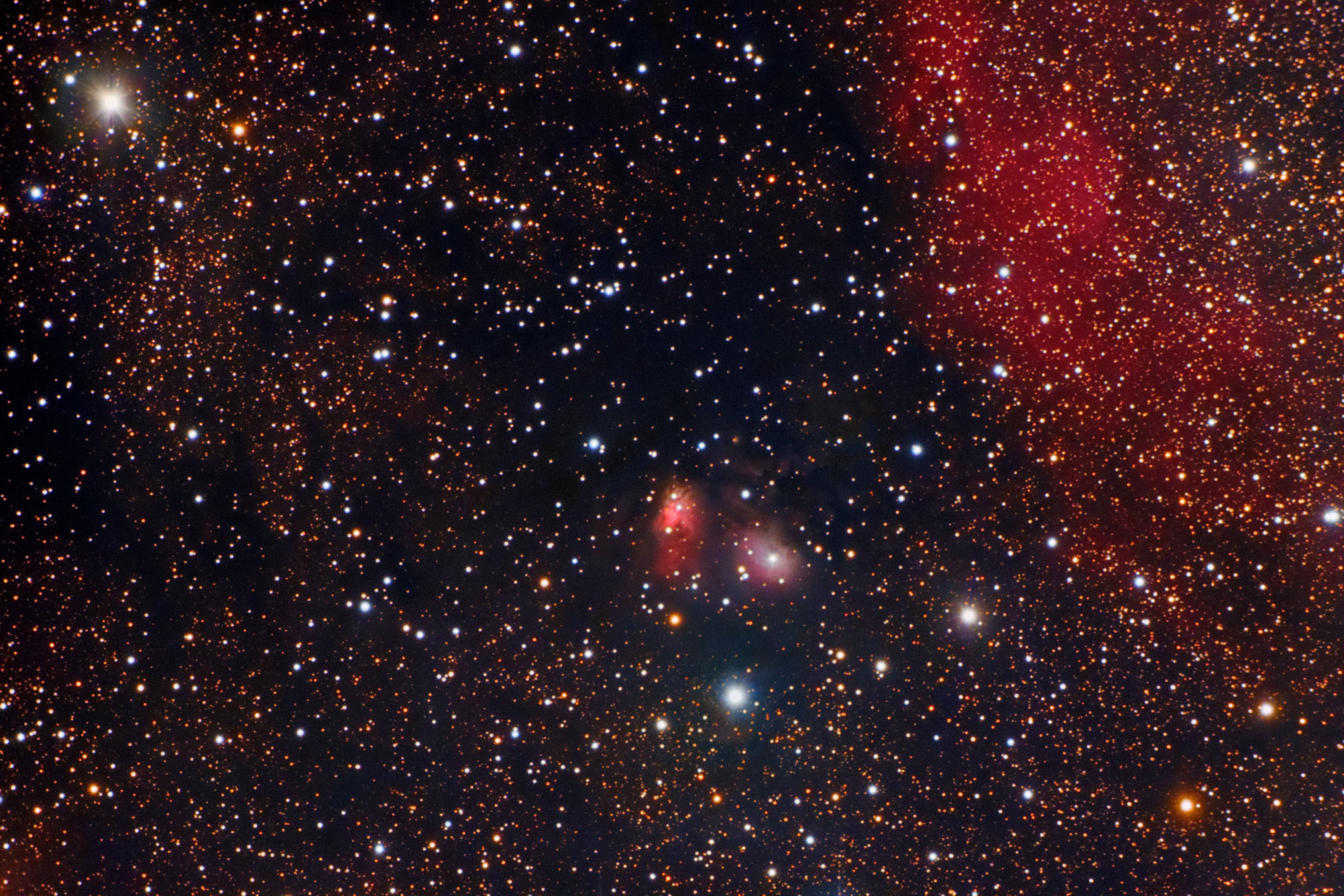Object name: SH2Designation(s): SH2, 088_LBN139, In April 2013 I ran an image taken in July 2012 of SH2-88. At the time I'd recorded it under its LBN notation of LBN 139. Color data, especially green and red were poor and I thought it too blue. I even put it down on my reshoot list. Figuring I'd never get to it I posted it anyway. Thanks to the "tower of babble" as I call the many catalog names for the same object it turns out I'd already retaken it under the designation of SH2-88 in October 2012 but as I was still processing July images I didn't realize it! Turns out I was right, it was too blue. Though it is still on the reshoot list as conditions in October, while better than July wasn't great and I still have some doubts this is really correct, just better. Here's the text from that original post.
SH2-88/LBN 139 is a small emission/reflection nebula in Vulpecula about 2.4 kpc (7,800 light-years) distant. It contains at least three separate star-forming regions in its about 1 minute diameter. To its west is a larger mostly reflection nebula around 10th magnitude GSC 02143-01279. SIMBAD shows no identifier for this nebula. I found an amateur who says SH2-88 is LBN 138 and the mystery reflection nebula is LBN 137 but both NED and SIMBAD point to rather obscure nebulae further west for these with LBN 139 being SH2-88. All appear to be part of the Vulpecula OB1 association. Other than this I found little on the field.
Transparency decreased steadily as I was taking the color data with the blue channel having clear skies but decreasing greatly by the time the last red frame was taken, (blue-green-red) was the order. I had to do a lot of compensation so the colors are rather suspect. Most images show SH2-88 as nearly all H alpha pink rather than only the center in my image with the rest blue. But they were listed as being H alpha for the luminance channel so they didn't pick up much of the reflection part. Those show the mystery nebula as rather white rather than blue. I have it down to retake the color data to verify my LRGB data. I suspect it is far too blue. Considering the weather I doubt I'll get to it for a while, unfortunately.
For those wanting to read more about the star-forming regions and more on Sh2-88 see:
http://cdsads.u-strasbg.fr/cgi-bin/nph-bib_query?2000A%26A...360.1107D&db_key=AST&nosetcookie=1
14" LX200R @ f/10, L=4x10' RGB=2x10', STL-11000XM, Paramount ME Related Designation(s):2MASX J04403475+5027419, 2MASX J23050983+6014560, 6C B043646.6+502153, 7C 0436+5022, 87GB 043647.6+502152, 87GB 230304.2+595825, 87GB[BWE91] 0436+5021, 87GB[BWE91] 2303+5958, IC 1470, NGC 1624, NVSS J044036+502744, NVSS J230510+601438, SHARPLESS 212, TXS 2303+599, [GMT2008] IR 23030, [KC97] G110.1+00.0, [KC97] G155.4+02.6, [WB92] 0436+5021, [WB92] 2303+5958, [ZHB90] G110.109+00.047, | | 